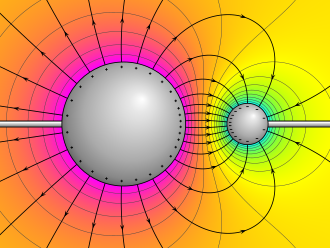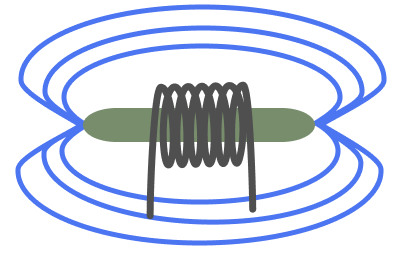Discover the Power of Electricity
Electricity, a fundamental form of energy, flows as electrical charge and empowers a wide range of devices and systems. From illuminating lights to driving appliances, motors, and electronic devices, electricity is at the heart of our modern world. It owes its existence to the movement of negatively charged particles called electrons, which reside within atoms.

The generation of electricity draws upon diverse sources such as coal, natural gas, nuclear power, solar power, wind power, and hydroelectric power. Power plants harness the energy from these sources and convert it into electricity. This electricity is then transmitted across long distances using high-voltage transmission lines. Finally, it is distributed to homes and businesses through a network of lower voltage distribution lines, ensuring a reliable supply.

Two primary types of electricity exist: direct current (DC) and alternating current (AC). DC electricity flows in a single direction, while AC electricity changes its direction periodically. Most homes and businesses employ AC electricity due to its efficient transmission capabilities over long distances, resulting in minimal energy loss compared to DC electricity.
The measurement of electricity revolves around units such as watts (W) or kilowatts (kW). The quantity of electricity consumed by a device or system is gauged in terms of watt-hours (Wh) or kilowatt-hours (kWh). The cost of electricity is typically quantified in cents per kilowatt-hour, influencing both consumer choices and energy conservation efforts.
Electricity's role in our daily lives cannot be overstated. As its usage continues to surge, it becomes imperative for society to focus on developing sustainable and renewable energy sources to meet the ever-growing demand while preserving our planet's resources.
Exploring the Power of Electric Fields
An electric field represents a force field that envelops an electric charge, exerting attractive or repulsive forces on other charges within its vicinity.
The strength of an electric field is quantified in units of volts per meter (V/m). Electric fields arise from the presence of electric charges, regardless of their state of motion or rest.
These electric fields radiate outward from the charges in all directions, with their strength diminishing as the distance from the charges increases.

The concept of an electric field can be visualized through the use of lines of force. These lines emanate from a charge and indicate the direction of the force that would act upon a positive test charge placed in that location.
The density of these lines of force signifies the strength of the electric field: closely spaced lines denote a strong field, while widely spaced lines indicate a weaker field.
An electric field can arise from both static and moving charges. For instance, when a charge occupies empty space, it generates an electric field in its surroundings.
Similarly, a current passing through a wire creates an electric field around it.
Natural phenomena like lightning generate electric fields, which can also be harnessed in practical applications such as electric motors and generators.
Understanding electric fields is fundamental in various fields, including physics and engineering disciplines like electricity, electronics, and electromagnetism.
Furthermore, electric fields hold significance in chemistry, biology, and geology, as they find practical applications in the design of electrical equipment and the study of charged particle behavior in matter and the atmosphere.
Unveiling the Power of Electric Potential
Electric potential, also known as voltage, represents the measure of electric potential energy per unit charge within an electric field. As a scalar quantity, it is quantified in volts (V), signifying its importance in electrical phenomena.

In an electric field, the electric potential at a specific point corresponds to the work required to move a test charge from a reference point to that location, divided by the magnitude of the charge. Typically, the reference point is selected as a location where the electric potential is zero, often considered as infinity for a point charge scenario.
Similar to how a gravitational field possesses potential energy, an electric field also contains electric potential energy. This energy characterizes the work involved in moving a charge from a reference point to its present position. Electric potential is often symbolized by "V," while electric potential energy is represented by "U."
The electric potential difference, denoted as change_history V, emerges as the measure of work required per unit charge to move a test charge between two distinct points within an electric field. Measured in volts (V), electric potential difference, also referred to as voltage, plays a pivotal role in determining the magnitude of current within an electric circuit.
Within a circuit, a power source, such as a battery, provides the electric potential difference or voltage necessary to drive the movement of electric charges, resulting in the flow of current throughout the circuit.
Devices like transformers, voltage dividers, and voltage regulators facilitate the manipulation of voltage levels, enabling its increase or decrease in various applications.
Understanding electric potential holds paramount significance in the realms of electricity, electronics, and electromagnetism, as well as other disciplines such as chemistry and material science.
Unveiling the Power of Electromagnets
An electromagnet is a unique type of magnet that arises when an electric current flows through a wire. This flowing current generates a magnetic field in the surrounding space, enabling the magnetization of metal objects like iron or steel.

The strength of the magnetic field produced by an electromagnet can be precisely controlled by adjusting the current flowing through the wire. This attribute makes electromagnets highly versatile and applicable in various domains, including electric motors, generators, and MRI machines.
Electromagnets can be crafted in diverse shapes and sizes, allowing flexibility in their applications. The strength of the magnet can be tailored by regulating the current flowing through the wire or by altering the number of turns in the coil.
In electric motors, electromagnets are utilized to generate the necessary magnetic fields for motion and force production. Generators employ them to convert mechanical energy into electrical energy by rotating a magnet within a coil of wire. Medical devices such as MRI machines leverage the power of electromagnets to create detailed images of internal body structures.
The practical applications of electromagnets extend beyond these examples. They find use in telecommunication systems, speakers, magnetic levitation trains, particle accelerators, and more. The ability to manipulate magnetic fields through electric current enables precise control and adaptability in numerous technological advancements.